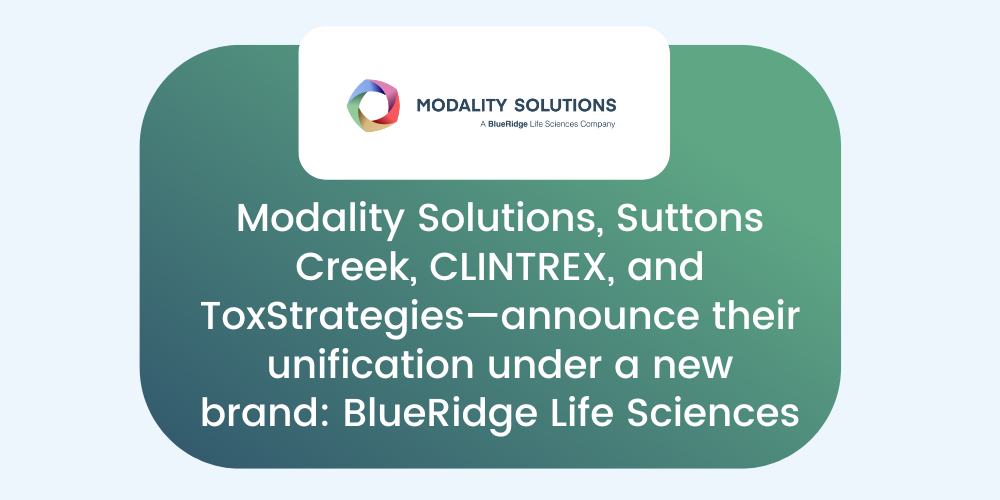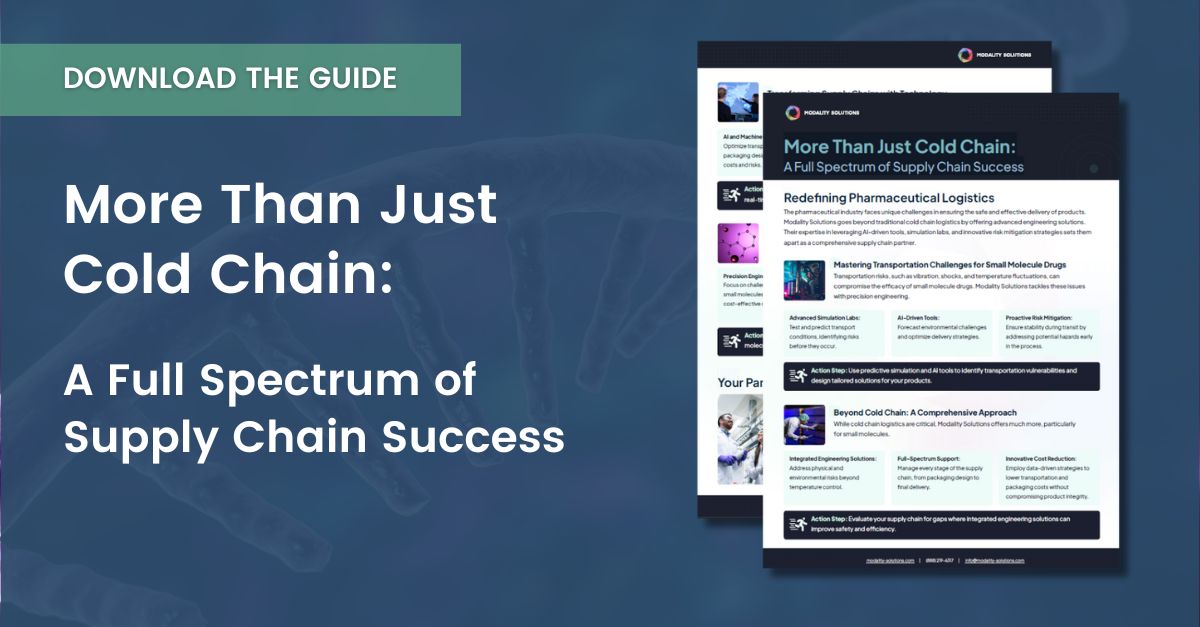Orphan Drugs: A Lifeline for Patients with Rare Diseases Can Bring Cold Chain Challenges
The Orphan Drug Act of 1983 (ODA) defined orphan drugs as a drug intended for the safe and effective treatment, diagnosis or prevention of rare diseases/disorders that affect fewer than 200,000 people in the United States or that affect more than 200,000 persons but are not expected to recover the costs of developing and marketing a treatment drug. (1) Prior to these legislative acts, only 38 drugs had been approved to treat rare diseases, but since the ODA was passed, there have been more 841 orphan drug designations issued by the end of 2017 in the U.S. alone. (2)
The ODA also enables sponsors to apply to the Food and Drug Administration (FDA) for orphan status for investigational drugs. Incentives such as tax credits and subsidies for clinical trials, reduced or waived regulatory fees, seven years of market exclusivity following product approval are clear differentiators for orphan drugs.
The market for rare disease products is continuously growing, expecting to reach $176 billion by 2020, with a CAGR of 10.5% just for orphan drugs – this is twice the growth rate of the overall prescription drug market (5.3% CAGR from 2014-2020). Thirty million people in the U.S. and 350 million people worldwide suffer from a rare disease, while 95% of rare diseases lack a single FDA approved treatment. (2)
It takes an average of at least ten years for a new mainstream medicine to complete the journey from initial discovery to the marketplace. Clinical trials alone for prescription drugs takes six to seven years in general. The average cost to research and development for a successful drug is estimated to be $2.6 billion. (3) Since the Orphan Drug Modernization Plan, effective June 29, 2017, the U.S. Food and Drug Administration unveiled a strategic plan to completely eliminate the agency’s existing orphan designation backlog and ensure continued timely response to all new requests for designation with firm deadlines. (4) Since the modernization plan, many large pharmaceutical entities shifted focus to orphan drugs development with a set of advantages like lower developmental costs due to government incentives, smaller-scale clinical trial requirements, fast-track designations, and accelerated approval are some of the incentives.
However, these opportunities also bring challenges to an “orphan drug” development program:
- Identifying and setting up investigative sites for studies.
- Recruiting for clinical trials in a limited patient population.
- Navigating the requirements for shipping, packaging, and distribution of drug studies across multiple countries and jurisdictions with unique customs and regulatory requirements.
- Understanding the variability in the orphan medicinal expression.
- Comprehending the severity and the course of diseases that may not be well known.
- Managing small and geographically dispersed populations. (5)
Cold Chain challenges in orphan drug development
Beyond the challenges of a widely dispersed patient population, smaller dose quantities, and complex regulations, more than 50% of the orphan drug market are biologics and need to be temperature controlled to maintain stability and drug efficacy. (6) Supply chain integrity of orphan drugs is crucial as the drug regulatory agencies of the world have increased their vigilance of the orphan drugs pharmaceutical supply chain. In the U.S., the FDA demands robust data collection for rare disease products with regard to their clinical effectiveness. Commonly manufacturers don’t engage the cold chain logistics partners early enough in the process to identify efficiencies that could speed up therapy for small patient populations. Monitoring for temperature and location is increasingly important in complex formulations, and even more so in orphan drugs products, where the loss of product can be costly, and time-consuming to both the supply chain and the patient. Orphan drugs require an integrated, specialized supply chain that aligns with the manufacturer’s commercialization strategy, regulatory mandates, stringent temperature needs, and often unique logistics’ challenges.
Our goal is to improve patient access to orphan medicinal products by creating a robust and compliant cold chain supply management system.
As an established expert in supply chain logistics with a global reach, our team has a significant opportunity to provide cost-effective solutions to the growing orphan drug market. We understand the regulatory requirements, validation strategies, and implementation know-how during packaging, shipment, and delivery in order to assure drug product efficacy from manufacturer to the patient’s hands.
Modality Solutions can guarantee quality cold chain supply management of your orphan drug through:
- Flexible cold chain design. Flexible design in your cold chain logistics network will ensure a supply chain that can respond to unique demand requests and incorporate alternative methods for supply chain compliance to account for shortages of resources. Maintaining dosing site storage flexibility in case patients are not available is often overlooked both for storage capacity and validation perspective. Allow for the packaging design and drug delivery to be modified for self-administration.
- Augment your in-house expertise. Modality Solutions will provide additional personnel on-site while preparing for approval saving on the cost and the challenge of an in-house hire. Often the orphan drug developer has fewer resources available to complete all the tasks leading up to submission. Additional support is often needed to assure the level of attention needed to handle the complexities around the submission. To compound this problem, the pace at which orphan drugs are approved is quicker because of their special designation. While the work required to bring to market is less, it does not offset the increased pace. The process goes from around six months to two months per review cycle.
- Agility in validation practices. Orphan drug approval timelines are compressed from six to two months for each cycle. Meeting each marker and timeline requirement is a challenge. However, Modality Solutions has the agility and resources for a rapid and comprehensive validation master plan.
- Best in the industry passive thermal packaging selection. We have rapidly selected and qualified numerous thermal packaging solutions with supplier-supplied data and have independently tested most thermal packaging on the market. We have provided cost-effective and compliant thermal packaging solutions for more than 75 temperature-controlled drug products ranging from cryopreserved deep-frozen technologies to cost-effective controlled-room temperature (CRT) passive packaging.
- Our Advantage Transport Simulation Laboratory™ studies the effects of transport stress on your orphan drug product. This simulation technology provides insights into the various circumstances to be considered during the implementation of early access programs (EAPs) such as drug formulation and packaging choices and offers key recommendations for their successful implementation. When working with Modality Solutions your orphan drug product will be tested for not only temperature and humidity hazards, but also pressure, shock, and vibration. Regulatory expectations and especially the high value of orphan medicinal products are driving leading companies to incorporate all these transport hazards as part of their CMC filing.
- Robust cold chain protocols. Orphan drugs are typically shipped in small amounts, via parcel networks rather than active containers or on small pallets. With parcel shipments, there is less control and more exposure to severe conditions compared to shipping pallet loads. Orphan drug treatments typically are done at small specialized clinics, rather than a hospital setting, and lack the critical logistics infrastructure. The unique and limited availability of orphan drugs makes the design and validation of your cold chain, especially risk-averse. The unforeseen exposure of parcel shipments and the lack of predictability for receiving sites necessitates a very robust packaging design and reliable continuous monitoring system to ensure drug integrity and security all the way to the patient’s hands.
- Shipping lane optimization and selection. Tight temperature control to match limited stability data has to be maintained in challenging real-world conditions. We have been consistently providing best-in-class logistics solutions in some of the most challenging emerging markets in the world. This expertise is required to guarantee supply chain integrity for all climates.
- International regulatory expertise. Modality Solutions team of engineers have implemented regulatory requirements for orphan drugs across the globe. Orphan drug regulations are fragmented between different countries. Some are relatively new such as Brazil’s ANVISA resolutions for orphan drugs which were recently adopted in 2018. In the United States, orphan drugs are investigated on an accelerated path due to their special status. This accelerated pathway can cause challenges with many non-US regulatory agencies who will not allow the orphan drug to be sold in their country because of the abbreviated clinical trials. Our experts in regulatory affairs will navigate through the international inconsistencies and assist you with the standard submission for global regulatory agencies.
You can rely on Modality Solutions to provide fully compliant cold chain logistics support for all temperature, shock, vibration, atmospheric pressure-sensitive orphan drug therapies while maintaining product availability and efficacy from manufacturer to the patient’s doorsteps in the most challenging climates.
References
1. Orphan Drug Act of 1983: http://www.ecfr.gov/cgi-bin/textidx?c=ecfr&SID=51cf70689d51f0ea4147c0a8ac649321&rgn=div5&view=text&node=21:5.0.1.1.6&idno=21
2. Orphan Drugs in the United States (Part one) Growth Trends in Rare Disease Treatments Institute Report October 17, 2018 https://www.iqvia.com/institute/reports/orphan-drugs-in-the-united-states-growth-trends-in-rare-disease-treatments
3. Biopharmaceutical Research & Development http://phrma-docs.phrma.org/sites/default/files/pdf/rd_brochure_022307.pdf
4. Orphan Drug Modernization Plan | FDA https://www.fda.gov/industry/…orphan…drugs-and…/orphan-drug-modernization-plan
5. Redfearn, Suz. “Tufts: Facing Many Challenges, Orphan Drugs Take 18% Longer to Develop.” Center Watch Weekly. 14 May 2018. Web. https://www.centerwatch.com/cwweekly/2018/05/14/tufts-facing-many-challenges-orphan-drugs-take-18-longer-to-develop/
6. Orphan drug: Development trends and strategies https://www.ncbi.nlm.nih.gov/pmc/articles/PMC2996062/



